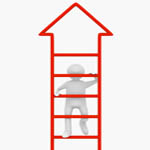This two-part article by Kye M. comes from the perspective of a dad teaching his young (7yrs & younger) kids how to play Redemption. However, some of the tips can certainly be used in general playgroup settings as well.
Background
I started playing Redemption in 2013 with my then-9yr old step-son (Kid #1). We had learned how to play the Pokemon card game as a way to spend time together just before hearing about Redemption. We were immediately hooked. Little did I know, my then-2yr old daughter (Kid #2) and then-6mo old son (Kid #3) would become interested and start playing as well. It was inevitable. In Part One, I will focus on the early stages and preparation for teaching the game to kids who cannot even read. Part Two will get into taking young players to a more competitive level.
Starting Early
First, I will say that your little one will naturally want to engage with you in whatever you are doing. My now-2yr old son (Kid #4) already enjoys “playing” Redemption. He also recently asked to help me fix our van when I was working on it…If you are putting any amount of time into Redemption, they will be glad to be right there with you. I have given Kid #4 some older cards with Mom-approved images that he can use. If you have ever had a 2-year old, you understand that if they don’t have their own cards, or can’t hold them, it’s no good. Even though they are older cards without much value, you can start teaching them to be gentle, use clean hands, and not bend the cards. (Disclaimer: I have seen some 2-year olds who would demolish everything given to them, so play it by ear and don’t let them touch The Second Coming!)
Those Who Can’t Read
Kid #2 and Kid #3 are practically 18 months apart, so they almost always do and learn things at the same time. However, Kid #2 started reading early for her age and Kid #3 was a little further behind. When I started playing Redemption with Kid #2, Kid #3 could only watch…but was definitely learning. When determining basic initiative of the cards, Kid #3 picked it up quickly and could soon figure out who had initiative before Kid #2. He also knew exactly what each of the dominants did even though he couldn’t read the words, and was picking up on game-play by watching and asking questions.
Since Kid #3 was constantly asking to be able to play Redemption, it was a good incentive to let him know that he could play as soon as he was able to read the cards by himself. I am convinced that it helped motivate him in his reading, which was a subject that otherwise did not interest him. He started playing Redemption just before turning 6.
Start Small
While the starter decks are a good starting point for kids who are old enough to read well and understand a little more strategy, I recommend starting with half of a starter deck for kids under the recommended age (7+). At their age, multiple brigades on offense and defense are too confusing, so I chose to break down the decks to a smaller size and only one brigade on offense and defense. I would play with one half of the deck (purple offense, brown defense) and they would play with the other (silver offense, black defense). While there was a gap in when they were learning how to play, I intentionally “trained” Kid #2 with silver/black, and Kid #3 with purple/brown.
Deck Building
You can have flexibility with how you build the two half-decks. However, I think it is important to split the two decks from the same half of the starter being used. If nothing else, this helps them with future Sealed Deck play (I speak from experience). Both decks should have standard dominants, so you will need to borrow these from another place to “fill out” the secondary deck. I recommend limiting the Lost Souls to 5 per half-deck, and playing to 3 Redeemed Souls. Personally, in deciding which cards to leave in and take out, I remove enhancements that do not have a special ability. That way, when they come across them later, they ask the question, “What is the point of this?!” My response – “Exactly”.
In Conclusion
Find ways to allow your young kids get involved early with Redemption. Even by watching, they will pick up game-play and functionality of certain cards. Once they are able to read on their own, split up one of the starter decks and create two “half” decks. By creating two functional half decks, the kids can “learn” both sides of the deck more effectively because they were thinking through what they needed to do, but also seeing what you were doing with your deck. Eventually, I used a similar methodology to grow them to a more competitive level, which will be covered in Part Two.

Andy Devine
This is awesome! I have two older kids (10 and 12) and then a second set (5 and 2) so this fits our family perfectly. Great ideas thanks!